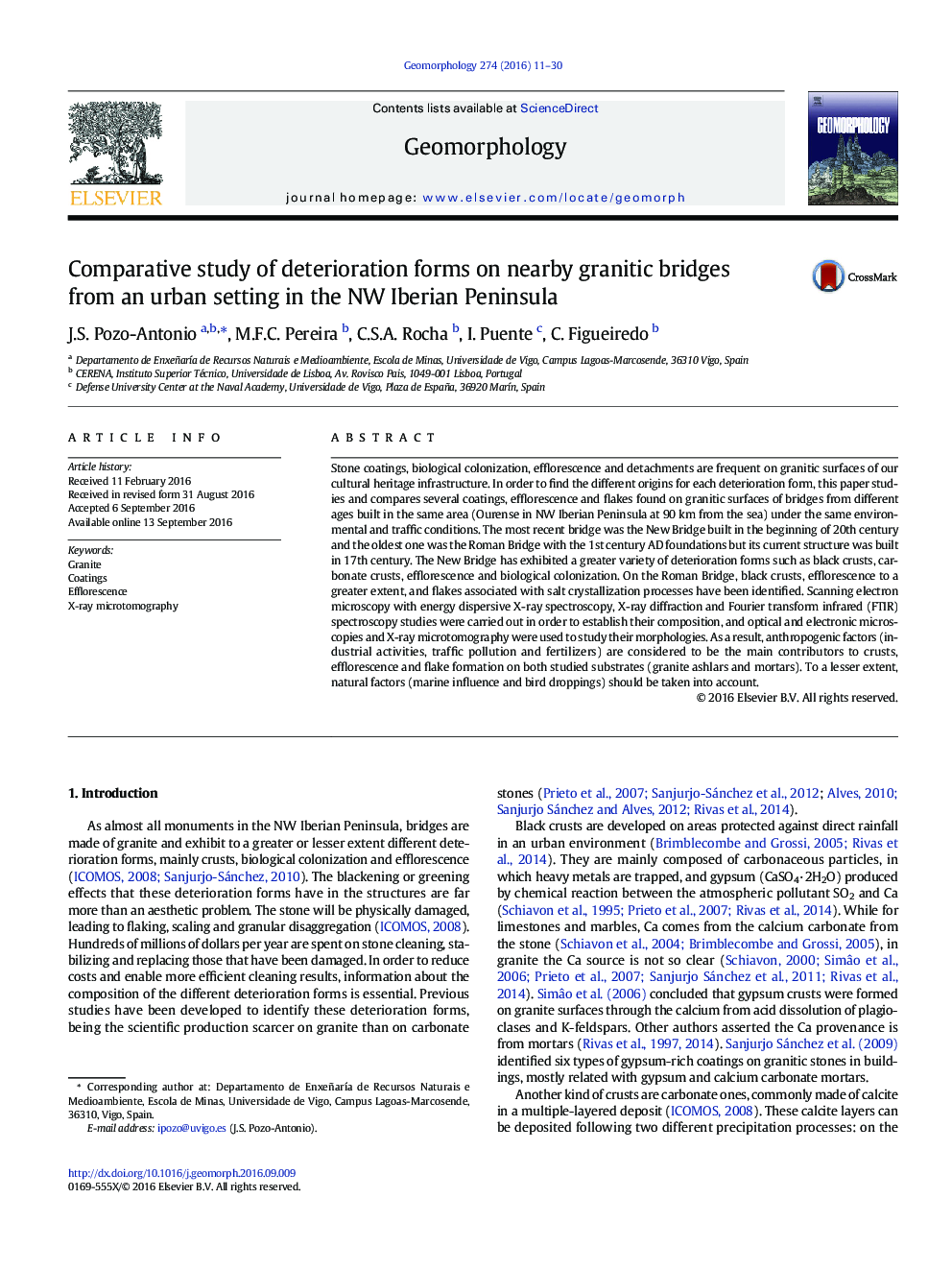| کد مقاله | کد نشریه | سال انتشار | مقاله انگلیسی | نسخه تمام متن |
|---|---|---|---|---|
| 4683906 | 1635375 | 2016 | 20 صفحه PDF | دانلود رایگان |
•
• Different rock coatings on two nearby granite bridges of different ages.
•
• Gypsum black crust were found on joint mortars and granite ashlars.
•
• Two different types of carbonate crusts were identified on the youngest bridge.
•
• Greater area with efflorescence was found on the oldest bridge.
•
• The biological colonization was found on the joints filled with mortars.
•
• X-ray microtomography showed the texture and the mineral distribution inside the crusts.
Stone coatings, biological colonization, efflorescence and detachments are frequent on granitic surfaces of our cultural heritage infrastructure. In order to find the different origins for each deterioration form, this paper studies and compares several coatings, efflorescence and flakes found on granitic surfaces of bridges from different ages built in the same area (Ourense in NW Iberian Peninsula at 90 km from the sea) under the same environmental and traffic conditions. The most recent bridge was the New Bridge built in the beginning of 20th century and the oldest one was the Roman Bridge with the 1st century AD foundations but its current structure was built in 17th century. The New Bridge has exhibited a greater variety of deterioration forms such as black crusts, carbonate crusts, efflorescence and biological colonization. On the Roman Bridge, black crusts, efflorescence to a greater extent, and flakes associated with salt crystallization processes have been identified. Scanning electron microscopy with energy dispersive X-ray spectroscopy, X-ray diffraction and Fourier transform infrared (FTIR) spectroscopy studies were carried out in order to establish their composition, and optical and electronic microscopies and X-ray microtomography were used to study their morphologies. As a result, anthropogenic factors (industrial activities, traffic pollution and fertilizers) are considered to be the main contributors to crusts, efflorescence and flake formation on both studied substrates (granite ashlars and mortars). To a lesser extent, natural factors (marine influence and bird droppings) should be taken into account.
Journal: Geomorphology - Volume 274, 1 December 2016, Pages 11–30
